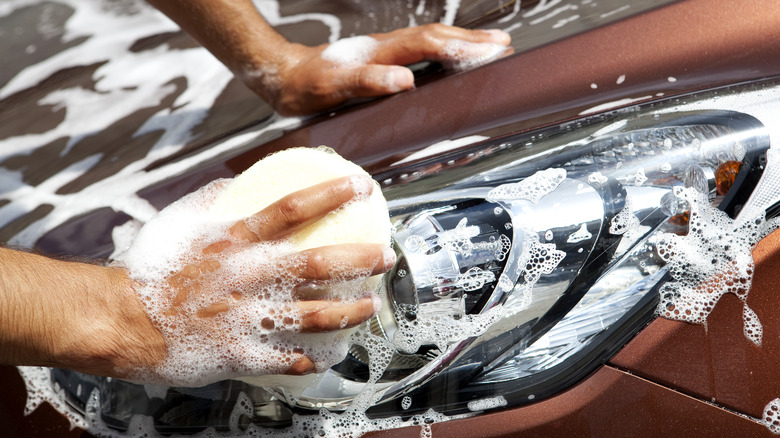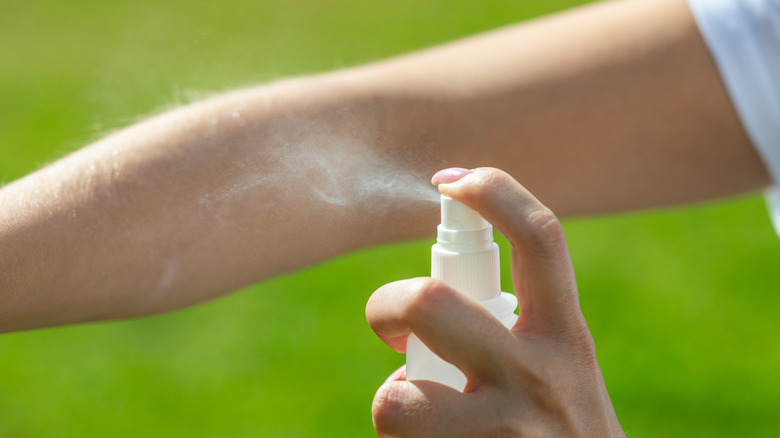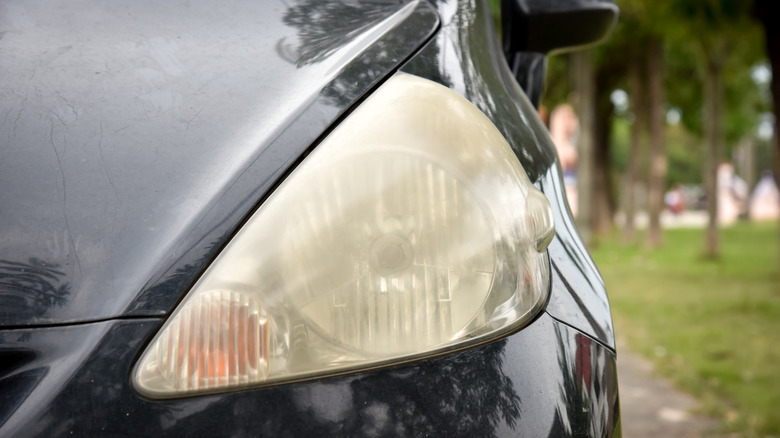Why You Should Never Clean Your Headlights With Bug Spray
When it comes to the parts of your car that get dirty the fastest, your headlights are pretty high on the list. After all, they're the most front-facing part of your car; if you're using the lights a lot, they're probably attracting bugs, which end up dying stuck to them.
It's best to use water and professional cleaning solutions to clean up grody, hazy headlights, but in the event you're out of professional cleaners and water isn't working, you may be tempted to try a more unorthodox solution. For instance, since one of the major causes of headlight grossness is bugs, could you clean them with bug spray?
Technically speaking, the answer is yes, or at least that's been the claim of certain viral videos. While it is technically possible to clean your headlights with bug spray, there are a handful of very good reasons that you should absolutely not do that, no matter what some guy on YouTube or TikTok tells you.
Why is bug spray bad for headlights?
According to some claims, bug spray can be used as a headlight cleaning solution in a pinch thanks to its chemical composition. The primary ingredient in most commercial bug sprays like OFF is diethyltoluamide, better known by its shorthand moniker of "DEET." When used in small amounts, DEET is a natural bug repellant. Note that we say "small amounts" there, because in larger quantities, DEET can swiftly become corrosive to certain materials.
While DEET isn't harmful to human skin, it's naturally opposed to certain artificial materials like plastics. When a large quantity of DEET is applied to a plastic object, the chemical will melt the object's outer surface, reducing its overall structural integrity and leading to further damage down the line.
Using a DEET-powered bug spray on your headlights won't clean them (even if it looks clearer at first), it'll irrevocably damage the exterior shielding. That can make headlights more susceptible to damage, or the elements could seep into the lamps themselves and do more damage.
What happens if you use bug spray on headlights?
If bug spray is so bad for your headlights, why does anyone even attempt to use it? Because cleaning your headlights with bug spray creates a sort of false cleaning that can look very good for a moment, but swiftly becomes untenable.
When you clean your headlights with bug spray, the DEET melts the outer surface of the headlight lens. This has a side effect of removing any surface particles and oxidation, which creates the appearance of a clear lens. Indeed, the lens will appear more vibrant than usual for a little while. However, once the chemical peels off, either with time or in bad weather, it'll take the outer surface of the lens with it.
Not only can this severely damage your headlights' structural integrity, it also strips away their outer UV protection, which means they'll start to turn yellow from sunlight damage. What you're left with is a headlight that's barely holding itself together, and can barely project its light.
If you want to clean your headlights properly, make sure to only use the correct cleaning solutions. If you already attempted to clean them with bug spray, you might want to make an appointment with your local body shop. Your headlights will likely need it soon enough.


